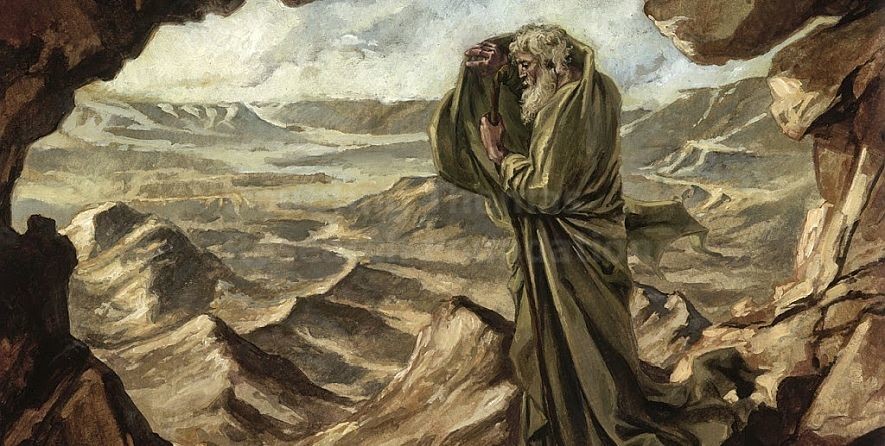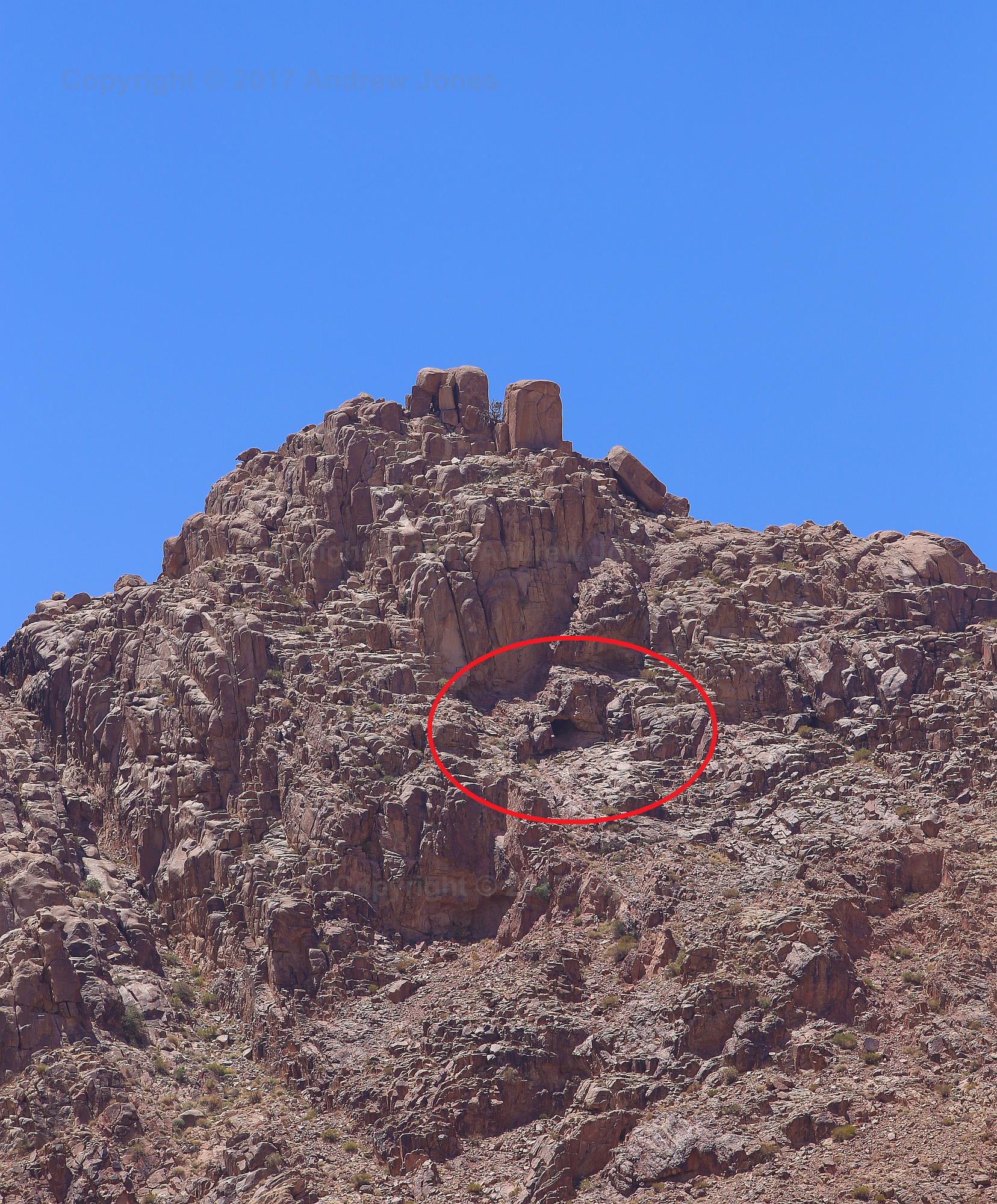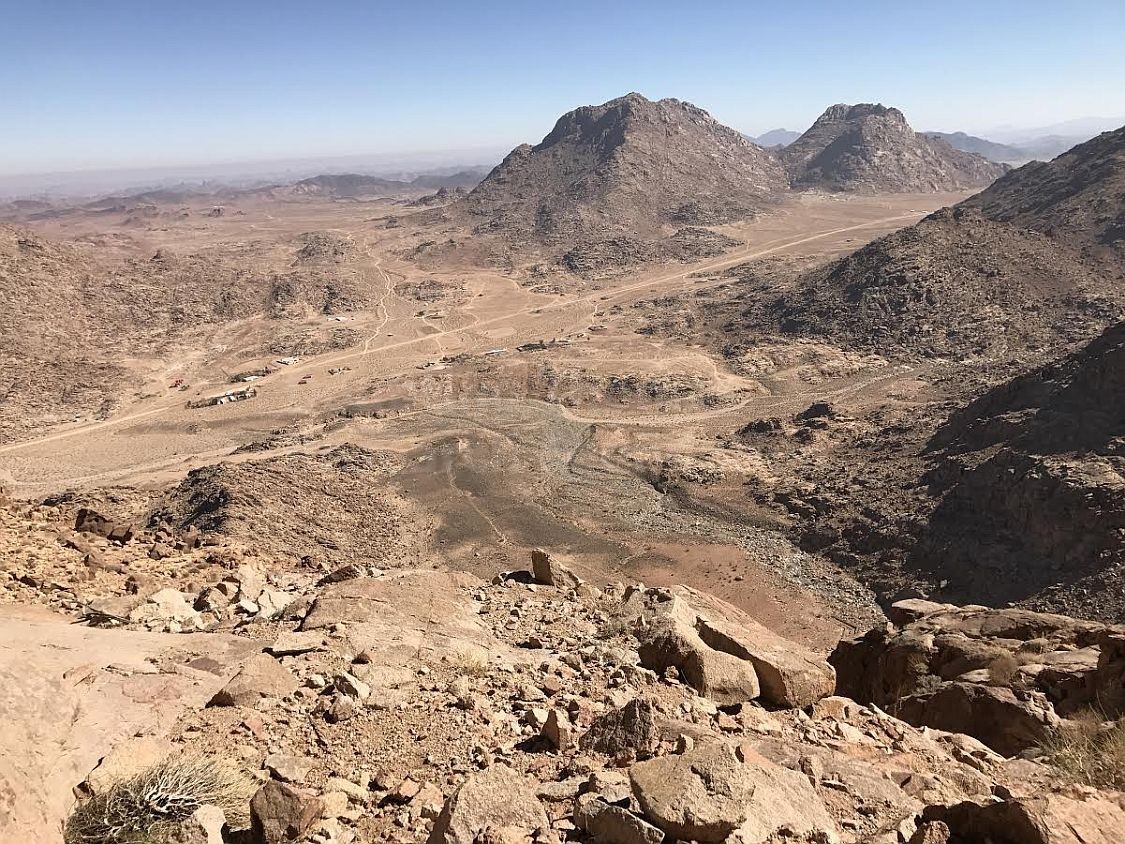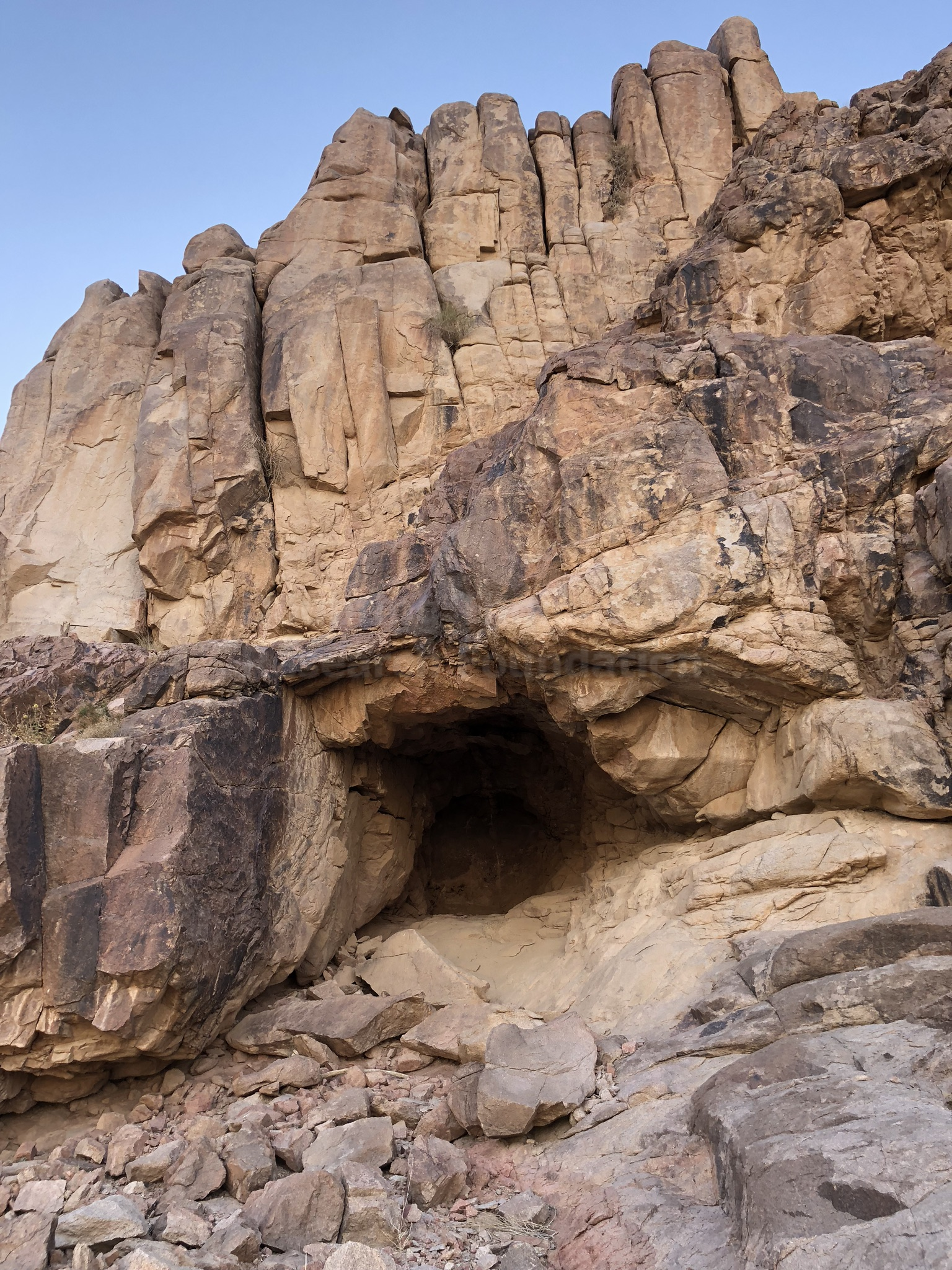According to 1 Kings chapter 19, the prophet Elijah stayed in a cave on Mount Horeb/Sinai and interacted with God there. He was fleeing Ahab and Jezebel in fear of his life.
Elijah traveled “a day’s journey into the wilderness” from Beersheba in Judea, which is believed to be the archaeological site of Tel Sheva in southern Israel. It is to the east of the Israeli city today named Beer Sheba.
From there, Elijah traveled 40 days and 40 nights to “Horeb, the mountain of God.” Once he arrived, he found a cave to sleep in for the night.
The next day, God instructed Elijah to “go out and stand on the mountain in the presence of the Lord, for the Lord is about to pass by.”
There was then a tremendous wind that caused rocks to fall, an earthquake, and a fire. Elijah was protected as the Lord was not “in” the phenomenon. After the dangerous weather was over, Elijah heard a “gentle whisper” from God and then “pulled a cloak over his face and went out and stood at the mouth of the cave.”
If the story has a historical basis and Jabal Maqla is Mount Horeb/Sinai, then there must be a distinct and visible cave on the mountain that would be noticeable upon a first visit. It must also be accessible.
The cave must be large enough to accommodate a person and deep enough for that person to sleep in out of view of predators. It should also be shaped so that Elijah could stand on the mouth of the cave or just in front of the mouth of the cave and converse with God.
The Cave of Elijah?
Although there are caves around the arena-like plain in front of Jabal Maqla, these are on the ground level. The story indicates that the cave was on the mountain itself.
There is only one cave that is very noticeable on the mountain from the ground level and reachable. It is located on the front of the mountain, above the possible altar of Moses and remnants of the 12 pillars.
The cave is about 15 feet high, 20 feet long and 20 feet deep. The top of the cave decreases from 15 feet to about 8 feet as one goes further into the back of the cave. It would be a safe, comfortable and easily discoverable cave for a single person to sleep in.
Early 20th-century theologian and explorer Alois Musil discussed Elijah’s journey in his 1926 book The Northern Hegaz: A Topographical Itinerary. On his forty-day journey, the prophet traveled from Samaria to Beersheba, then proceeded southward.
Musil believed that Elijah traveled not to the Sinai Peninsula, but more directly south into ancient Midian.
The round figure of forty days and forty nights shows that he journeyed for a very long time. The statement that he proceeded from Beersheba southward proves that he traveled in the direction of Elath, or the modern al-‘Akaba, and that he thus went to the land of Madian. After he had been strengthened by the Lord, he was to return through the wilderness to Damascus (1 Kings 19:15). He accordingly must have proceeded by caravan along the great transport route on the eastern frontiers of Edom and Moab northward, thus along the ‘Araba road, which the migrating Israelites reached near Ma’an (Deut., 2:8).
These are the only Biblical records from which it is at all possible to determine the position of Horeb, the mountain of God.
Alois Musil, The Northern Hegaz: A Topographical Itinerary, (New York: American Geographical Society, 1926), 297.
Musil is right about one thing: there are few clues in the Scripture about Mount Sinai’s true location. The account of Elijah’s trip to the mountain’s cave offers us one of the few pointers to an Arabian location for Sinai.
Last updated April 24, 2019.




I had long thought the Exodus was a marvelous story told for spiritual and moral lessons. Now I see that I was utterly wrong and I am so glad! I rejoice and am exceedingly glad! This has made my faith so much stronger. Oh, and I emailed President Trump and explained this matter to him and how these sites must not be destroyed in the construction of the city of Neom. I hope he reads it.
God bless you in this wonderful work and cause.
Dr. Nathaniel J. Merritt Met.D.
Pingback: Timeline: The Tradition of Mount Sinai's Arabian Location - Jabal Maqla
Pingback: Early May Update on Our Research Into Sinai in Arabia - Jabal Maqla
Moses and Elijah probably visited the same cave. They seem to have both had a vision of the future kingdom of God there, as revealed in the NT “transfiguration” event.
Elizaj’s Cave is on the top side of the mountain around 500 meters above sea level just in from of the true Mt. Sinai(Jabal Al Lawz) in the Northern Province of Saudi Arabia the Tabuk Region. I went there & saw it with my own eyes together with the Pillar/Altar of Moses & the Golden Calf Altar in the same area.
Unfortunately, few know the truth, and many Christians even doubt the Bible; they are literally false. Look how beautiful it is from God, he goes down to Mount Horeb / Sinai, and talks to Moses and Elijah. All the books of the Bible are true and Historical, Undeniable Facts. We need to show this to the world. That there is only one is true God, Yahweh.